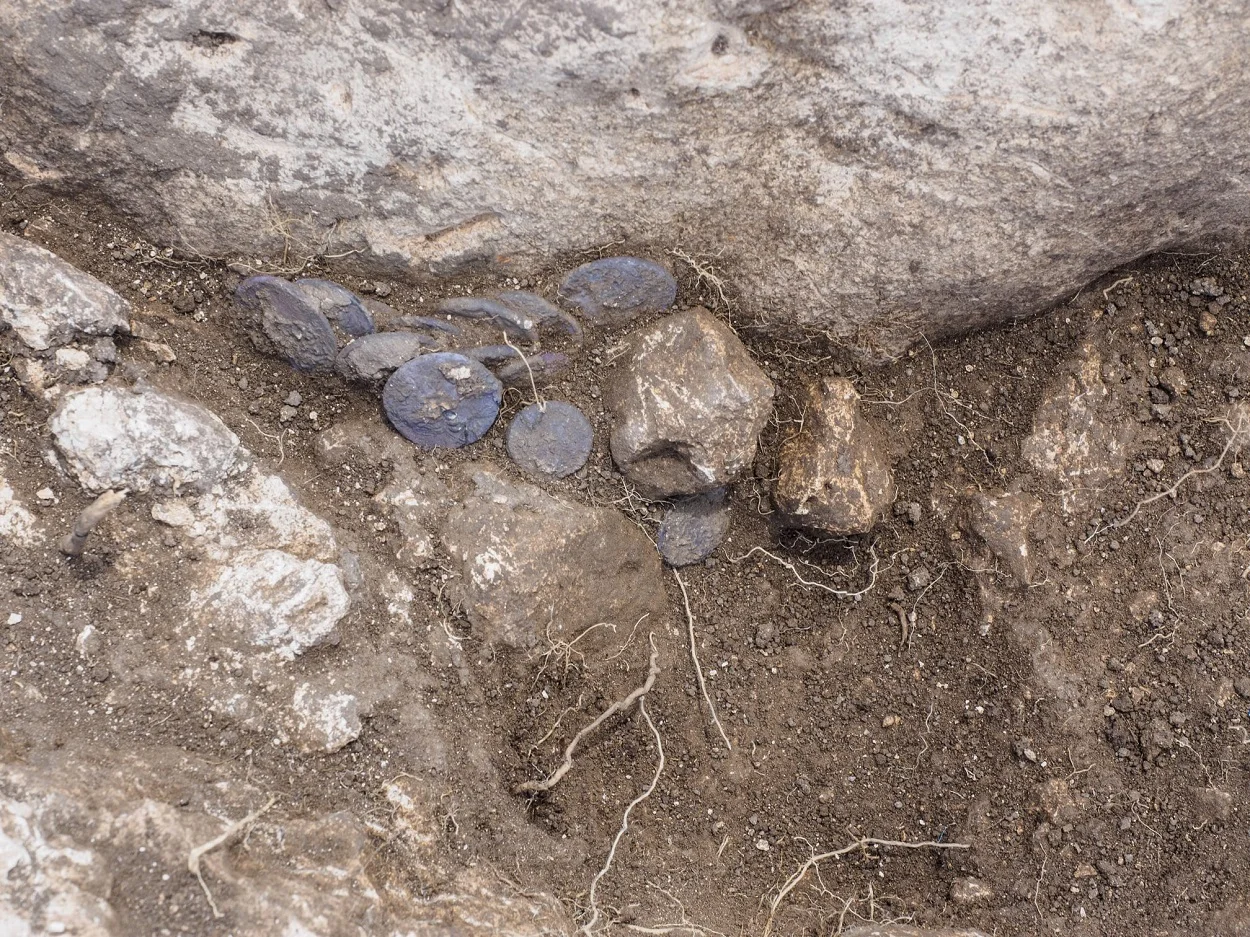Archaeologists excavating at Horvat Ashun, near Modi’in-Maccabim-Re’ut, Isreal, have discovered a rare collection of silver coins dating to the Hasmonean period between 135 and 126 BC.
The Hasmonean dynasty was established in 141 BC by Simon Thassi. The dynasty governed Judea and its surrounding regions during the Hellenistic era of the Second Temple period.
The hoard, which was discovered in a rock crevice back in 2017, has now been placed on public display at the Hasmonean Heritage Museum in Modi’in.
According to a press statement by the Israel Antiquities Authority (IAA), the hoard consists of silver shekels and half-shekels, featuring depictions of Antiochus VII (148 – 142/1 BC) and Demetrius II Nicator (160 BC – 25 BC), both kings of the Hellenistic Seleucid kingdom.
Archaeologists suggest that the hoard was the life savings of an inhabitant living on an agricultural estate, and was likely buried for security with the intention to recover at a later date.
“It’s exciting to think that this coin hoard waited for over 2,000 years until we uncovered it,” said Abraham Tendler, the excavation director on behalf of the Israel Antiquities Authority.
Additionally, several bronze coins minted by the Hasmonean rulers were discovered, inscribed with the names of Yohanan, Judah, Jonathan, and Mattathias, along with the title: “High Priest and Head of the Council of the Jews.”
The excavation also found evidence that links the estate residents to the First Jewish Revolt, the first of three major rebellions by the Jews against the Roman Empire. Some of the coins have the date “Year Two” and “Year Three” of the revolt, as well as the slogan “Freedom of Zion”.
This is further evidenced by defensive measures by the estate inhabitants, who filled the row of living quarters adjacent to the outer wall of the building with large stones, thus creating a fortified wall.
Header Image Credit : IAA
Sources : IAA





